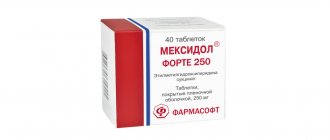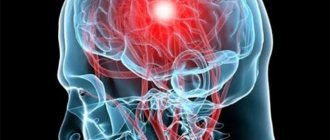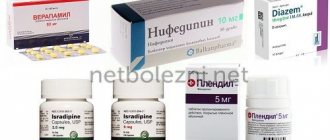The effectiveness of treatment and rehabilitation of patients suffering from brain function disorders depends on the prescribed therapy regimen. In most cases, doctors recommend a set of drugs that are similar in action and belong to the same pharmacological group. These include Cortexin and Mexidol.
Cortexin and Mexidol are prescribed for the treatment and rehabilitation of patients suffering from disorders of brain function.
How they affect the body
Cortexin is a nootropic drug and has a neuroprotective effect.
The drug has the following therapeutic effects:
- improvement of metabolic processes in nervous tissue cells;
- stimulation of the cerebral cortex;
- normalization of memory;
- increasing the level of learning;
- reducing the toxic effect of psychotropic drugs (in chronic patients).
The active substances of the drug penetrate the brain cells, positively affecting areas of ischemia.
Mexidol also belongs to nootropic drugs. Widely used to treat patients suffering from cerebrovascular accidents. The drug is prescribed during the rehabilitation period after hemorrhagic strokes and TBI.
The drug has antihypoxic, anticonvulsant and nootropic effects.
In addition, the drug:
- eliminates the effects of hypoxia;
- normalizes metabolic processes in brain tissue;
- takes part in speech restoration.
Mexidol has antihypoxic, anticonvulsant and nootropic effects.
The principle of action of the drugs
Both drugs have completely different mechanisms of action:
- The mechanism of action of Cortexin is based on its ability to penetrate the BBB. It also directly regulates the content of cyclic nucleotides in the human body. Thus, muscle fibers relax, blood vessels dilate and the volumetric velocity of blood flow in tissues subject to ischemia increases.
Cortexin improves cerebral blood flow and reduces vascular resistance, does not affect the characteristics of general blood circulation (blood pressure, pulse, total peripheral vascular resistance), improves blood circulation in the affected area, and the blood circulation in the healthy area does not change.It is a vasoactive agent that improves cerebral circulation, enhances the utilization of sugar and oxygen by brain tissue, and increases the brain's resistance to hypoxia.
It also affects the activity of all types of amino acids, the level of neurotransmitters (dopamine and serotonin) in the blood, and has antioxidant properties. While taking Cortexin, neuropsychological indicators improve: concentration and memory increase, anxiety levels decrease, and performance increases.
- The second nootropic, Mexidol, has antioxidant and membrane protective effects, which ensure stabilization of the cell biomembrane and affect the synthesis of prostaglandins. The active ingredient of the drug increases the content of polar lipid particles, reduces the viscosity of the lipid layer and increases membrane permeability, reduces the cholesterol/phospholipid ratio.
Clinical effects of MexidolThe product realizes its properties at three levels - neural, vascular and metabolic. Mexidol reduces pulse blood supply in the vessels of the carotid blood supply and increases it in the vertebrobasilar region due to its ability to penetrate the blood-brain barrier.
What is the difference
Despite the fact that the drugs are similar in therapeutic effect, there are a number of differences between them.
Compound
The active ingredient of Mexidol is ethylmethylhydroxypyridine succinate, which has membrane protective, antihypoxic and nootropic effects. Cortexin has the same pharmacological properties, but it contains a polypeptide complex obtained from the cells of the cerebral cortex of cattle.
Release form
Mexidol is available in the form of a solution for intramuscular or intravenous administration. Cortexin is a lyophilic powder from which a solution for intramuscular administration is prepared.
Age
Mexidol is not used in pediatric practice. Cortexin is prescribed to patients under one year of age and older.
General information about Mexidol
Mexidol is a synthetic antihypoxic drug. It contains succinic acid, which provides an amber effect. This medication has a fairly wide range of pharmacological effects. The mechanism of its action is realized at the level of neurons and blood vessels. It is widely used in psychoneurological, therapeutic and cardiological practices.
Available in the form of an injection solution of 2 and 5 ml in an ampoule and film-coated tablets of 125 mg. The package contains from 5 to 10 ampoules. The active ingredient is ethylmethylhydroxypyridine succinate. Additional components of the drug are lactose, povidone, magnesium stearate.
Indications for use
Cortexin
The drug is prescribed in complex therapy of the following pathological conditions:
- cerebral circulatory disorders;
- consequences of traumatic brain injury;
- encephalopathy;
- acute and chronic forms of encephalitis;
- impaired memory and concentration;
- epileptic seizures;
- asthenic syndrome;
- delayed speech and psychomotor development in children;
- cerebral palsy;
- brain damage due to Alzheimer's disease;
- after brain surgery.
Cortexin is prescribed in complex therapy for cerebral circulatory disorders.
Mexidol
The product is used in the following cases:
- consequences of acute cerebrovascular accident;
- rehabilitation after a TBI;
- encephalopathy;
- vegetative-vascular dystonia;
- neuroses;
- IHD;
- withdrawal syndrome;
- intoxication with antipsychotic drugs.
Main differences
Both drugs belong to the same pharmacological group, but have significant differences:
- Firstly, these are different active ingredients. There are also differences in the additional components of the drugs. This leads to differences in the mechanism of action, since each individual substance has its own point of application and can influence the same body system in different ways.
Secondly, different routes of administration. Cortexin cannot be administered intravenously, while Mexidol cannot be administered intramuscularly. In patients with thin, poorly defined veins, intravenous administration may be inconvenient.- Thirdly, the drugs have different indications and contraindications. Cortexin is one of the few indicated in childhood, while Mexidol is strictly prohibited.
Special instructions for the use of Cortexin and Mexidol
Pregnancy and lactation
There is no data on clinical studies of these drugs and their effect on the fetus. Use during pregnancy is not recommended. During treatment, breastfeeding should be temporarily stopped.
Childhood
Cortexin is used in pediatrics; Mexidol is not used to treat children.
Elderly age
Both drugs are used in gerontological practice. Dosages may be reduced depending on the age, weight and general condition of the patient.
Drug compatibility
Cortexin and Mexidol can be taken simultaneously. However, do not forget that in this case you definitely need to consult a specialist. In each individual case of the disease, an individual selection of the dose of drugs is necessary.
Large pharmaceutical studies prove that drug-drug interactions are completely harmless.
They complement the mechanism of action and enhance each other's effects. However, it is prohibited to use injectable forms of these drugs, mixing them in one bottle.
This leads to the fact that the active substances begin to interact with each other, changing the structure and effects. It is necessary to administer one drug first, and then the next. Otherwise, various unpredictable treatment results may develop.
Is it possible to inject them at the same time?
Cortexin and Mexidol have different methods of administration, so you can inject them together, adhering to certain rules.
Cortexin is allowed to be administered only intramuscularly. The contents of the bottle are diluted with 1-2 ml of water for injection or saline. The frequency of administration is once a day. For adults, injections of 10 mg of the drug are recommended for 10 days. The choice of dosage for children depends on body weight: with a weight up to 20 kg - 0.5 mg/kg, over 20 kg - 10 mg.
Dosage schedule
Mexidol in tablet form is taken 125-250 mg per day. The maximum permissible number of tablets taken per day should not exceed 6 pieces. Treatment on average should last at least 1.5-2 months. The injection form of the drug is administered intravenously. The ampoule is diluted in 100 ml of saline or 5% glucose and administered very slowly over an hour.
Is it possible to use Cortexin and Cavinton at the same time?
Cavinton is also a nootropic and has several indications for use.
Firstly, this drug improves blood supply to the brain by reducing blood viscosity and accelerating the process of oxygen transfer to nerve cells.
Secondly, Cavinton reduces the damaging effect of excitatory amino acids on nerve cells, providing a neuroprotective effect.
The simultaneous use of Cortexin and Cavinton will give a more pronounced effect than when they are used separately.
Interaction with other tools
The drugs are compatible with most groups of drugs. But there are still some limitations:
- Nootropics should not be taken together with diuretics, as there may be an increase in potassium levels in the blood. This phenomenon is very rare and occurs in isolated cases.
- You should also not combine medications with alcoholic beverages (alcohol inhibits the effect of the main substance).
- The drugs combine well with other nootropics.
In other cases, no interaction of undesirable effects was observed.
Which is better: Cortexin or Mexidol?
Cortexin is a nootropic. The drug helps restore damaged nerve cells, improves impulse transmission between neurons of the central nervous system, reduces convulsive cell activity and normalizes the ratio of inhibitory and excitatory neurotransmitters.
Mexidol is an antioxidant and antihypoxant. It inhibits lipid peroxidation, thereby reducing the accumulation of free radicals. The drug has membrane protective, anticonvulsant and anxiolytic (anti-anxiety) effects. Like Cortexin, Mexidol increases the body's resistance to stressors (hypoxic, intoxicating).
Both drugs are effective in treating diseases associated with damage to nerve structures:
- Encephalopathy.
- Cerebrovascular accidents (infarction, ischemia).
An interesting fact is that Cortexin and Mexidol have a proven positive effect in the treatment of alcohol intoxication, relief of withdrawal symptoms and post-withdrawal conditions.
The drugs are successfully used in the treatment of mild cognitive disorders and asthenic syndrome, however, for severe disorders (for example, mental retardation), the use of Cortexin is preferable.
The combined use of drugs increases the overall positive effect.
Unlike Mexidol, Cortexin is used to treat epilepsy as part of complex therapy, cerebral palsy and inflammatory diseases of the nervous structures (encephalitis, meningitis, meningoencephalitis).
Another important fact: Cortexin can be used in patients of any age group, including children of the first year of life, and Mexidol can only be prescribed to those who have already reached the age of 18.
Thus, the scope of application of Cortexin is shifted towards purely neurological diseases, and Mexidol - towards the consequences of damage to body tissues of various natures.
The composition of Cortexin is a mixture of polypeptides obtained from the cerebral cortex of cattle. Mexidol is ethylmethylhydroxypyridine succinate (an artificially synthesized chemical substance).
Cortexin is available in the form of a dry white-yellow powder, which must be diluted in saline, water for injection or local anesthetic before use. It is administered intramuscularly only.
Mexidol has two forms of release: injection solution and tablets. The injection solution is available in ampoules and is immediately ready for use. Intramuscular and intravenous administration is possible.
Both drugs are produced and released in Russia. A package of Mexidol costs about 1.5-2 times cheaper, but the exchange rate is lower for Cortexin.
There are no side effects when using Cortexin. In case of an overdose of the drug, no adverse reactions were also observed, although there is a risk of allergic reactions.
The use of Cortexin is contraindicated in the presence of individual intolerance. Also, due to lack of data, it is not recommended to use this substance during pregnancy.
Mexidol is sometimes characterized by the development of side effects:
- Nausea.
- Vomit.
- Constipation.
- Feeling of heaviness in the stomach.
- Allergic reactions.
In case of an overdose of the drug, excessive drowsiness may occur.
The drug is contraindicated in the presence of individual intolerance, liver or kidney failure.
Cortexin and Mexidol are good medicines that have a positive effect in the treatment of diseases. However, it is necessary to remember their differences and application features. In some situations, Cortexin will work better, in others, Mexidol, and in some cases, it is advisable to use them together. In each specific case, therapy should be selected individually, taking into account both the characteristics of the drug and data about the patient.
Side effects
It must be borne in mind that drugs, when used correctly, have no side effects. But if they are observed, they disappear immediately after the dosage is normalized.
The most common unwanted effects are:
- nausea, vomiting, diarrhea, bloating;
- dizziness, headache, general weakness;
- orthostatic hypotension;
- increased potassium in the blood;
- colds in the form of rhinitis, cough;
- allergic reactions in the form of skin itching, angioedema;
- blurred vision, dry eyes, photophobia, blurred vision.









